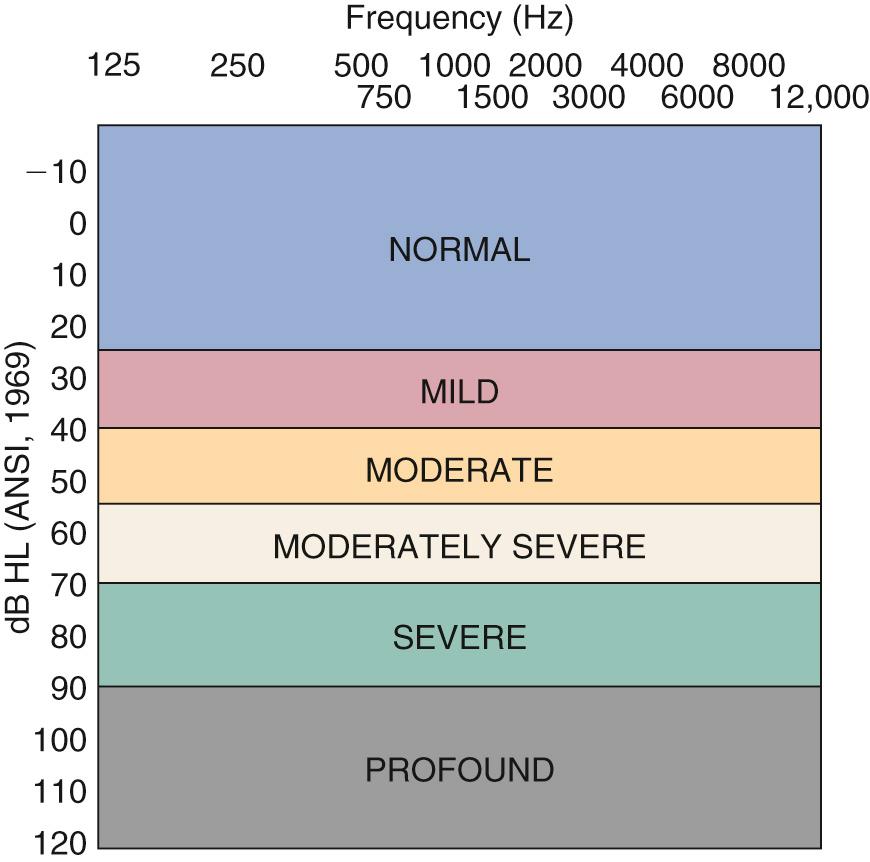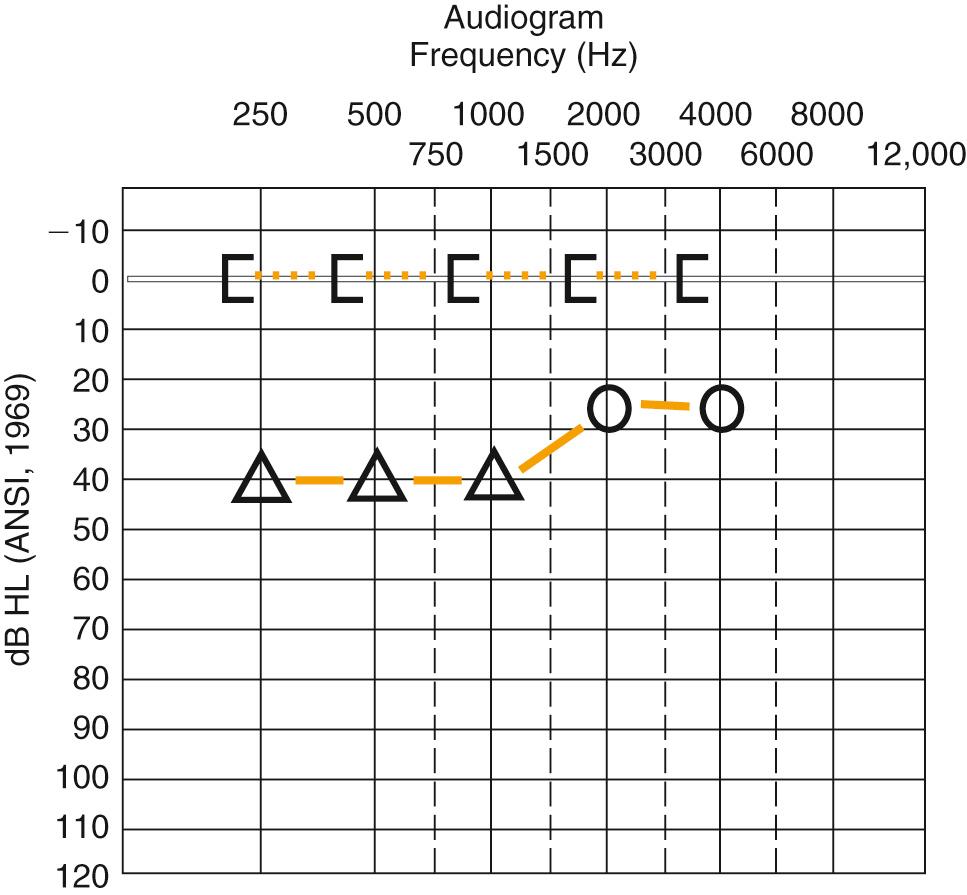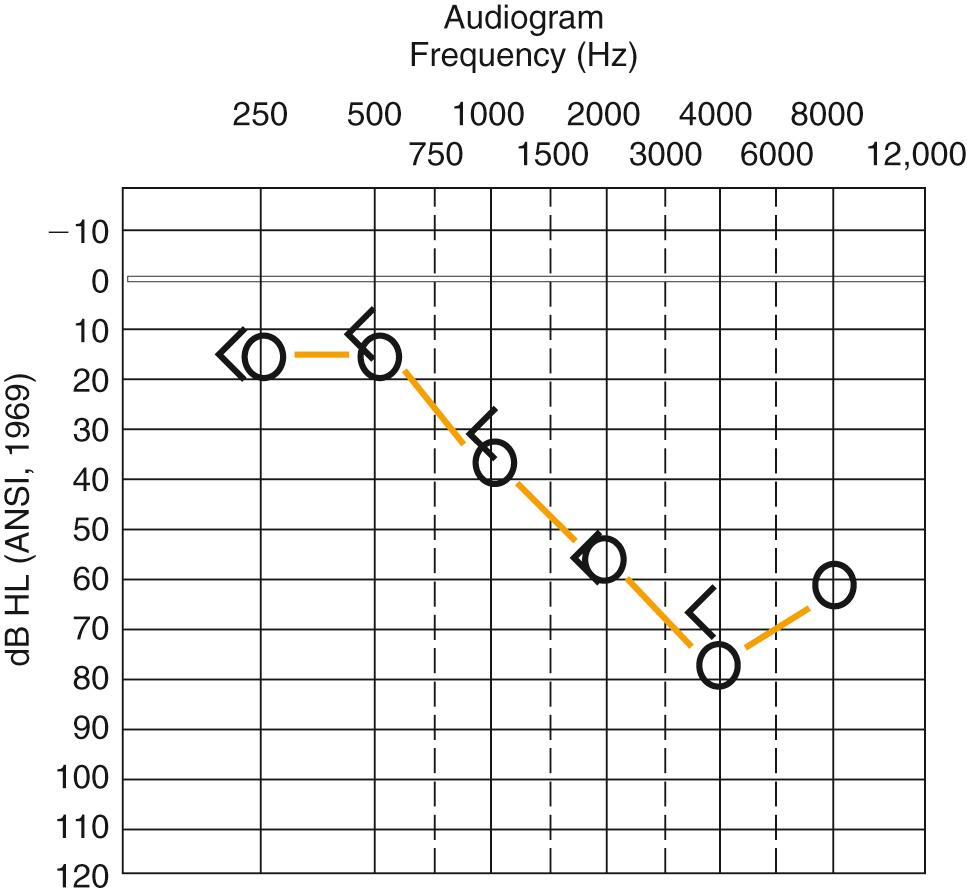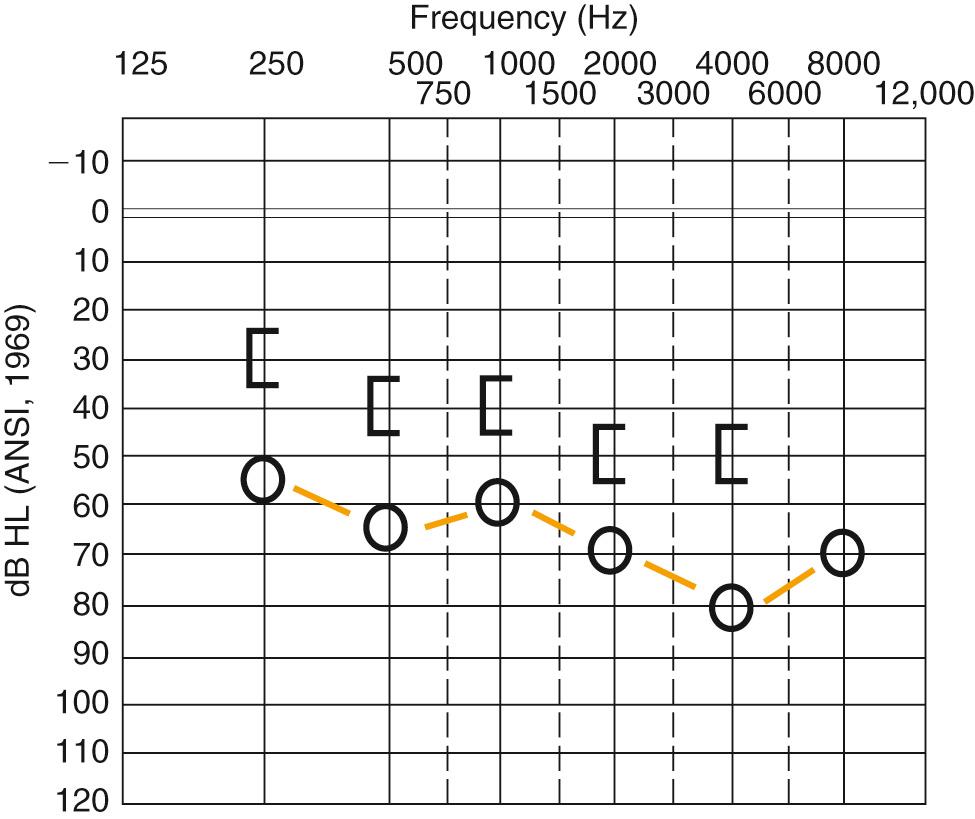Physical Address
304 North Cardinal St.
Dorchester Center, MA 02124
The assessment and diagnosis of auditory function are integral clinical components of clinical decision making in otology.
Diagnosis of hearing loss is often based on a battery of audiologic tests that help define the type and severity of the hearing loss.
Acoustic immittance measures serve several purposes, including the identification and classification of peripheral and central auditory disorders; they may also be used as a tool to objectively estimate auditory sensitivity.
The otolaryngologist must have the ability to critically evaluate audiologic data to identify possible inconsistencies.
Although in the last several years improvement has been significant in the sensitivity and specificity of imaging studies in diagnosing otologic and neurotologic conditions, appropriate and well-executed neurodiagnostic studies continue to have a significant role in the diagnosis of otologic and neurotologic conditions and in treatment planning.
Speech stimuli are used in several audiologic tests and are an important part of audiologic test battery. Such tests provide information regarding the impact of hearing loss on communication and central auditory function, and they also aid in decision making with regard to candidacy for various surgical procedures.
With the advent of tympanic membrane surface electrode recordings, the clinical contributions of electrocochleography (ECochG) are receiving increased recognition. In addition to its traditional application in diagnosing endolymphatic hydrops, new evidence indicates the effectiveness of ECochG in the diagnosis of third-window conditions, such as superior semicircular canal dehiscence.
Evidence is mounting as to the significant contribution of neurophysiologic intraoperative monitoring in otologic and neurotologic surgery outcomes. It is important that this be preceded by relevant preoperative neurodiagnostic measures for appropriate intraoperative planning.
Auditory neuropathy spectrum disorder continues to pose diagnostic and management challenges. Increasing evidence suggests that the diagnostic characteristics based on a configuration of test results do not necessarily identify a unified pathology, but rather they represent a variety of specific etiologies and pathologies.
Auditory neuropathy can greatly reduce speech recognition, which often results in poor development of appropriate speech and language skills. Because of this, patients with auditory neuropathy are often considered to be candidates for a cochlear implant. Although their outcomes may be variable, patients with auditory neuropathy without confounding cognitive or developmental disorders often obtain speech-recognition skills similar to those of children with cochlear hearing loss.
In his book The Nature and Treatment of Diseases of the Ear , Wilde stated:
“The degree of deafness may be learned, and the hearing distance measured by holding an ordinary watch near the external meatus, and the distance at which the tickings can be accurately counted, and at which the patient is conscious of an interval between these sounds, should be recorded. To effect this properly, the watch should be approached gradually to the ear until it gets to within the hearing point, and again applied directly to the auricle, and gradually removed to some distance.”
He continued, “It is absolutely necessary, if we wish to watch the progress of a case not only to conduct these observations with great care, but also to take a written note of the hearing distance the first and each subsequent time we see the patient.” Wilde also recommended placing the watch “gently between the teeth of the patient, and the amount of hearing thus obtained (is) likewise noted”—an early attempt at bone-conduction testing.
As those statements were made nearly a century and a half ago, many developments have been made in the clinical science of audiology, beginning with the development of instrumentation that can provide accurate quantification of hearing sensitivity and acuity. For instance, in his book Disease of the Ear, Dench stated that “it is scarcely necessary to mention the more complicated instruments, which from time to time have been devised for determining quantitative audition. Their use has never become universal on account of the complex construction.” Continuing, he described and illustrated the electric audiometer developed by Urbantschitsch in 1890 that used technology made available by the invention of the telephone. He further discussed the phenomena of crossover and interaural attenuation, cautioning against errors that may occur when a loud sound is presented to a profoundly deaf ear in the presence of a normal-hearing contralateral ear.
As is done today, these early otologists used the results of auditory testing in two ways: to quantify hearing loss and assist in the differential diagnosis of ear disease on the basis of auditory phenomena. Today, our clinical armamentarium consists of highly sophisticated and specific clinical test modalities that provide accurate quantitative information regarding a patient's hearing sensitivity. Other tests capitalize on specific auditory phenomena to provide differential diagnostic site-of-lesion information. The clinical audiology test battery can be classified into two groups on the basis of how the results are obtained: behavioral tests require a specific behavioral response to an auditory stimulus, whereas objective tests do not require a behavioral response from the patient and are based on a physical or a physiologic measurement associated with an auditory stimulus. An example of an objective physical measurement is the acoustic immittance test typically used to evaluate middle-ear status. An example of a useful physiologic measurement is the auditory brainstem response (ABR), not to mention other electrophysiologic phenomena.
Typically, diagnosis is based on a combination of information obtained from the patient's history, physical examination, and audiologic test battery results. As a rule, a hierarchy exists in the administration of auditory diagnostic tests that is specifically based on patient symptoms and complaints, and results obtained in one manner can often be verified by results obtained through a different modality. For instance, an air-bone gap demonstrated by pure-tone audiometry can be confirmed by an abnormal tympanogram, the typical otoscopic appearance of a retracted eardrum, and its poor mobility on pneumatic otoscopy; this can be used to determine the presence of a conductive hearing loss caused by otitis media.
Pure-tone audiometry is the most commonly used test for evaluating auditory sensitivity. Auditory pure-tone signals are delivered primarily through air conduction and bone conduction. The American National Standards Institute ANSI/ASA S3.21-2004 (R 2009), American National Standard Methods for Manual Pure-Tone Threshold Audiometry, recommends that a hearing threshold be defined as “the lowest sound pressure level or force level at which responses occur in at least 50% of ascending trial.”
When used clinically, audiometric threshold data are most often displayed on a graphic plot called an audiogram ( Fig. 134.1 ). Various symbols are used to represent data obtained for the right and left ears by use of both air- and bone-conducted signals. The current audiogram representation was recommended by the American Speech Language and Hearing Association in 1974 and was adopted in ANSI S3.21-1978. Data are presented in hearing level (HL), which is calibrated to referent sound pressures (ANSI S3.6-1969, 1970) that represent the hearing sensitivity of normal, young adults when tested under reasonably quiet test conditions. Thus, an audiogram represents a patient's ability to hear sounds compared with the hearing sensitivity of a group of young adults with normal hearing.

Pure-tone air-conduction thresholds measure the function of the total hearing system, including the external, middle, and inner ear. In typical audiometric testing, pure tones that range in octave spacings from 125 or 250 to 8000 Hz are presented to the listener by headphones or insert earphones. Threshold is usually determined by the use of a version of Hughson-Westlake “ascending method,” in which sounds are initially presented well above threshold and are then presented in decreasing steps of 10 to 15 dB, until the sound is inaudible. The tone is then increased in steps that go up 5 dB, then down 10 dB, until the single hearing level at which a response is obtained three times is reached.
Because air-conduction thresholds measure the acuity of the entire hearing system, when evaluated alone, they provide little information regarding the etiology of hearing loss and specific auditory pathology. However, when examined in conjunction with thresholds obtained by bone-conduction testing, they help determine the type of the hearing loss.
When plotted on an audiogram, pure-tone thresholds also provide information regarding the severity of the hearing loss. Thresholds that fall into the 0- to 25-dB range are considered normal, whereas thresholds above 25 dB represent various levels of hearing loss (see Fig. 134.1 ).
Pure-tone bone-conduction testing provides auditory threshold information when the cochlea is stimulated more or less directly, with stimuli that bypass external- and middle-ear structures. Thus comparison of thresholds obtained through air and bone conduction is used to determine the type of hearing loss (normal hearing vs. conductive loss vs. sensorineural hearing loss [SNHL] vs. mixed loss) and to define the magnitude of the conductive hearing loss, if one exists.
The location of the bone-conduction thresholds on the audiogram will help determine the severity of the hearing loss ( Fig. 134.2 ). In bone-conduction testing, a bone oscillator is typically placed on the mastoid process. Although this placement does not guarantee that the responses obtained are from the ear located on the side on which the oscillator was placed, such placement provides an enhanced dynamic range compared with other placements, such as at the frontal bone. Most audiometers currently in use are calibrated for placement of the vibrator on the mastoid.

The relationship between air-conduction and bone-conduction thresholds is used to determine the type of hearing loss. When air-conduction thresholds are elevated relative to normal bone-conduction thresholds—a phenomenon referred to as an air-bone gap —the loss is classified as conductive (see Fig. 134.2 ). When air-conduction and bone-conduction thresholds indicate the same amount of hearing loss, the loss is classified as sensorineural ( Fig. 134.3 ). Last, when air-conduction thresholds are elevated relative to abnormal bone-conduction thresholds (resulting in an air-bone gap), the loss is classified as mixed ( Fig. 134.4 ).


Three speech tests are commonly included in the audiologic test battery to evaluate the listener's ability to detect and recognize speech: determination of the speech-detection threshold (SDT), determination of the speech-reception threshold (SRT), and speech discrimination or recognition. The SDT is indicative of the intensity level at which a listener can barely discern the presence of a speech signal 50% of the time. With such a task, the listener is not required to recognize the stimulus but is merely asked to acknowledge its presence. Typically, the SDT coincides with the pure-tone average (PTA; an average of the pure-tone thresholds obtained at 500, 1000, and 2000 Hz). The SRT represents the intensity level at which a listener can repeat 50% of the speech material. Unlike the SDT, the SRT requires the listener to repeat the word that was presented and is usually 8 to 9 dB higher than the SDT. Both the SDT and SRT can be obtained using either air or bone conduction.
Determination of speech discrimination is more complex than is determination of either the SDT or SRT. Speech discrimination is an important part of the audiologic test battery because it provides information regarding the listener's ability to recognize speech under well-controlled conditions. Speech-discrimination test results are used in conjunction with the findings of other tests to (1) help determine the differential diagnosis of hearing loss, (2) provide information about the listener's ability to communicate effectively, (3) aid in decision making regarding candidacy for various surgical procedures, (4) provide useful information about rehabilitative needs, including the effectiveness of hearing aids or cochlear implants, and (5) provide information regarding central auditory function.
Various materials and formats have been used to evaluate speech discrimination. Those most commonly used as part of an adult audiometric test battery include monosyllabic words presented in an open-set format, such as the Central Institute for the Deaf W-22 word list and the Northwestern University (NU) Auditory Test No. 6, more commonly referred to as the NU-6. Although taped materials are optimal for evaluating speech discrimination, materials are often presented through live voice for rapidity and ease of administration. Speech discrimination materials are usually presented 50 dB above the patient's SRT—a level that should be well within their audible range.
Patients with a conductive hearing loss frequently demonstrate excellent speech-discrimination scores when test stimuli are presented at a sufficiently loud level. Those with a sensorineural hearing loss, however, often demonstrate reduced scores on speech discrimination tests, even when the stimuli are presented well within the audible range. Patients with lesions of the eighth cranial nerve (CN) or beyond tend to have lower speech-discrimination scores than patients with a cochlear lesion site and may even demonstrate reduced speech discrimination in the presence of normal auditory pure-tone thresholds. The extreme of this phenomenon may be found in patients with cortical lesions who are unable to understand speech or any type of complex auditory signal.
Speech discrimination testing is an essential component of testing to evaluate candidacy for a cochlear implant. A variety of materials are available for such use, and the specific materials administered are usually dependent on the age of the patient. Pediatric speech-recognition measures can be broken down into closed-set tests that measure prosodic cue, speech feature, or word perception; open-set word and sentence tests that provide an estimate of the child's ability to communicate in the “real world”; and subjective report scales , such as the Meaningful Auditory Integration Scale (MAIS), that use parental reporting to evaluate the child's listening skills in his or her daily environment. With adults, most clinics follow recommendations provided in the manual of the Minimum Speech Test Battery (MSTB; http://www.auditorypotential.com/MSTBfiles ), which includes administration of tests of consonant-nucleus-consonant monosyllabic words, AZ Bio Sentences, and the BKB-SIN test.
If a sufficiently loud signal is presented to the test ear, it can cross the skull and be perceived by the nontest ear, a phenomenon referred to as crossover . Thus it may be necessary to deliver a masking signal to the ear that is not being tested. When crossover occurs, responses to air-conducted pure tones that have crossed over from the poorer ear will actually shadow the thresholds of the better ear. Such “shadow” responses reflect the threshold levels of the better ear elevated by the amount of interaural attenuation at each test frequency.
Interaural attenuation refers to the reduction in sound when it crosses from one ear to the other. The lower limit for interaural attenuation for bone-conduction testing is essentially 0 dB across frequencies. Because of this, masking should be used routinely with bone-conduction testing when threshold levels between ears are asymmetric. In addition, because the signal primarily travels to the nontest ear through bone conduction, the need for masking arises when air-conduction thresholds for the test ear are poorer than the bone-conduction thresholds for the nontest ear. Masking is useful in such situations because it shifts the sensitivity of the cochlea of the nontest ear to prevent it from hearing the signal delivered to the test ear.
The need for masking with air-conducted signals will depend on how the signal is delivered. Interaural attenuation ranges from 35 to 50 dB for stimuli delivered via headphones and from 60 to 65 dB for insert earphones, depending on the frequency of the test signal, with a tendency for greater interaural attenuation at the higher frequencies. Insert earphones have less contact with the lateral temporal bone than do standard headphones, so less sound energy is delivered contralaterally; thus greater levels of effective masking to the nontest ear are possible, and less crossover occurs to the test ear when insert earphones are used.
Masking should be used with air-conduction testing when the air-conduction threshold of the test ear and the air-conduction or bone-conduction thresholds of the nontest ear differ by the interaural attenuation factor for the frequency being tested. When determining the SRT, masking should be used whenever the SRT of the test ear and the SRT, air-conduction PTA, or bone-conduction PTA of the nontest ear differ by 45 dB or more. With speech-discrimination testing, masking should be used whenever the presentation level used to deliver stimuli to the test ear is 45 dB or more above the SRT or air- or bone-conduction PTA of the nontest ear.
The critical bandwidth concept dictates that the extent of threshold shift produced by a masking signal is affected by its frequency and intensity. The term effective masking, therefore, refers to the intensity level of the test signal that is barely masked by presentation of a masking noise to the ipsilateral ear. When selecting a masking signal, the goal is to select a signal that will provide the largest shift in threshold with the least intense noise. Because the effective masking level is dependent on the structure of the test signal, various types of noises are used for clinical masking. Narrow-band noises centered around a specific frequency identical to that of the pure-tone test signal are most often used with pure-tone testing, whereas speech noise of a more complex nature is most often used when masking for speech tests.
Occasionally, test situations will arise in which masking is necessary but is not possible, such as with cases of bilateral conductive or mixed hearing loss. This phenomenon, referred to as a masking dilemma , may occur when bone-conduction thresholds for both ears are within normal limits, and the air-conduction thresholds equal or exceed interaural attenuation. In such cases, unmasked air-conduction thresholds will likely reflect the responses of the nontest ear, whereas masked air-conduction and speech thresholds may appear worse than they actually are because of overmasking, which occurs when the masking noise presented to the nontest ear “crosses over” and affects the responses obtained for the test ear.
Become a Clinical Tree membership for Full access and enjoy Unlimited articles
If you are a member. Log in here